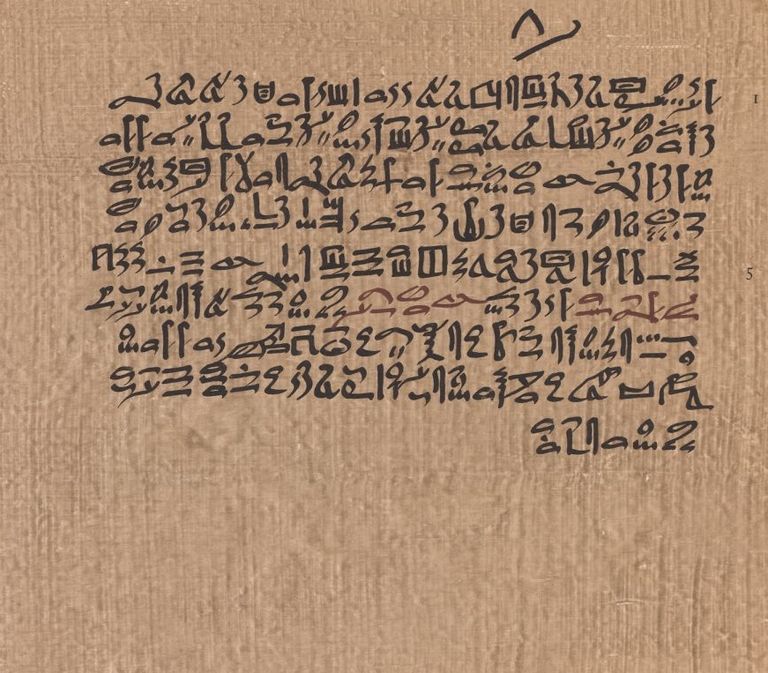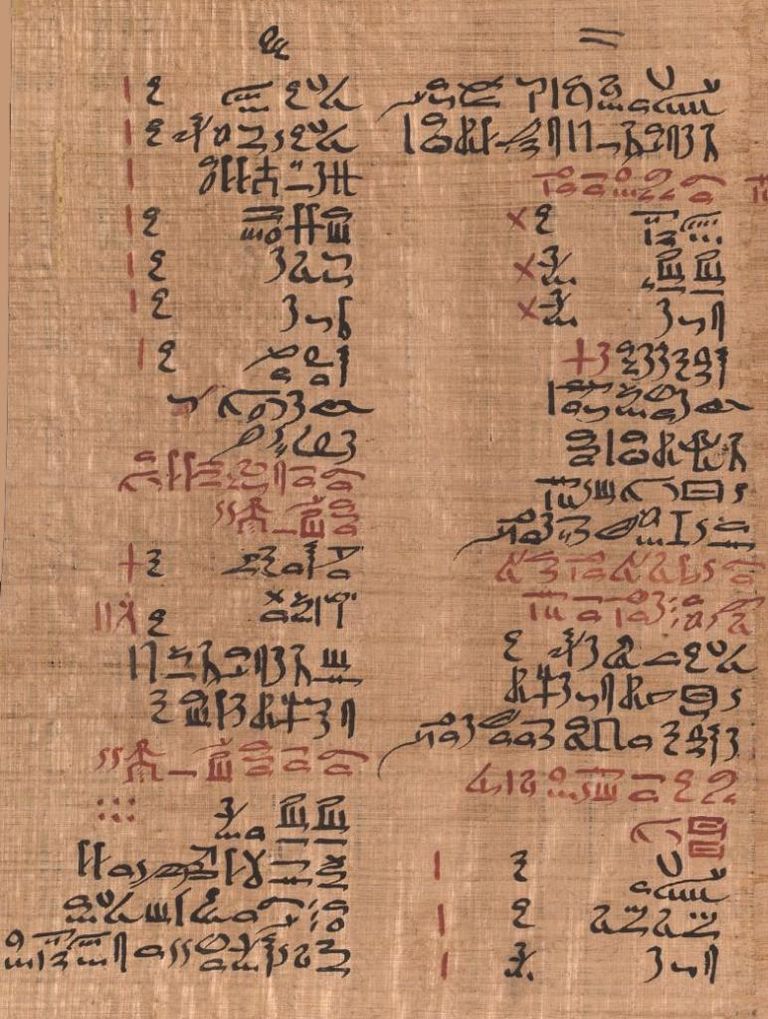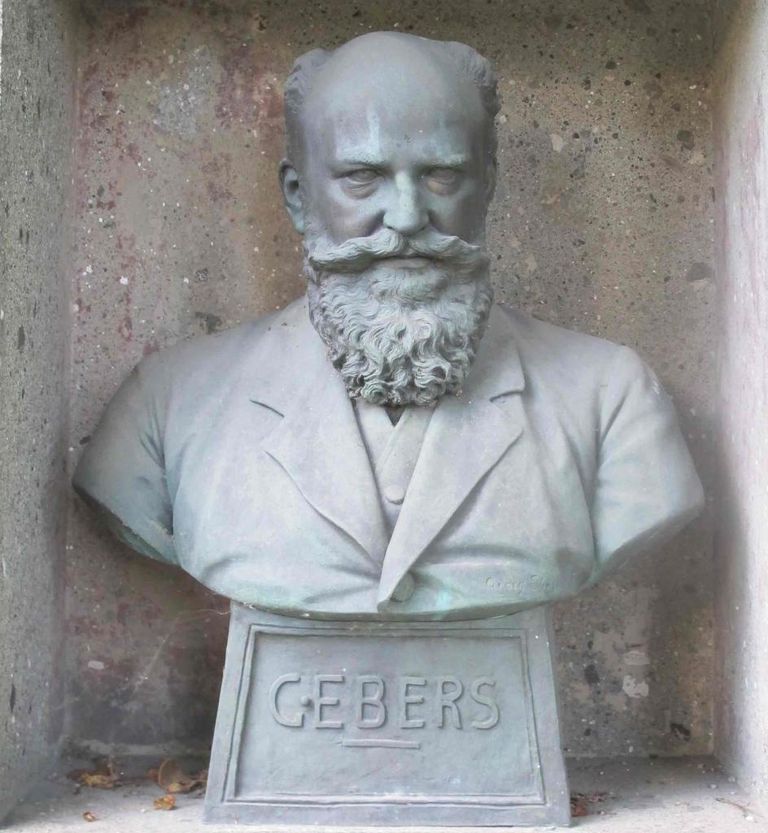
At the beginning of the year, in the middle of the pandemic, a news item made the front page of most of the media: colchicine, an anti-inflammatory that could act effectively against Covid-19, reducing deaths and complications from the disease would have been found in the so-called Ebers Papyrus in which eighty diseases and their possible therapies are described.
Colchicine was talked about in a timely manner as I said in all the media.
What I am going to try is to share as of today a series of posts related to medicine and natural cures in the Ancient Age, especially in Ancient Egypt where this practice came to acquire notable dimensions.
The one known today as the Ebers Papyrus described not only the diseases but also their possible therapies, including wild saffron as a treatment for swelling, which amounts to a true medical treatise.
A legacy for posterity that Ancient Egypt left in numerous papyri that were found in the archaeological excavations that were carried out later.
The first archaeological exploration with a certain scientific rigor was carried out at the end of the 18th century, and was in charge of a group of French scholars who accompanied Napoleon on the military expedition that he carried out in Egypt.
The first Egyptian papyrus with medical notions and therapy used is the Kahun Papyrus dated around 1800 BC.
The Ebers Papyrus with which I am going to deal today is from 1550 BC.
The Ebers Papyrus.

Actually, this papyrus takes the name of Georg Ebers because he not only bought it from Edwin Smith (a well-known American antique dealer) in 1872, but he also edited it under and gave it an adequate international promotion since he was a writer and Egyptologist. (like the current Christian Jacq the Frenchman who has written the Ramses saga among other books dedicated to the Egypt of the pharaohs).
The peculiarity of this papyrus is that it is the most extensive (in dimensions) found so far. A truly monumental work 20 meters long by 30 cm wide.
Another peculiarity is the number of columns: 108 which in turn consist of 20 to 22 lines each, which speaks eloquently of the completeness of the document.
The papyrus despite the intervening years (almost four thousand) is in an excellent state of conservation and can be admired in the library of the University of Leipzig in Germany.
Until today it is considered the largest medical treatise of Ancient Egypt and even contains information referring to the first pharaonic dynasties, so it is not to be excluded that part of it has been written by Imhotep himself (he lived in Ancient Egypt between 2690 and 2610 BC) considered the first doctor in history, although many historians consider Hippocrates as the father of Medicine.
This papyrus contains numerous notions and therapies to be used in the case of digestive diseases, dermatological, gynecology and dentistry among others. But, above all things, it is the first text that talks about migraines, a discomfort so common today.
Ramses and Homer, two patients who testify to the efficacy of Egyptian medicine.
Ramses was not only one of the most famous pharaohs of the Old Kingdom of Upper and Lower Egypt (66 years of reign) but also have been found in excavations of hieroglyphs and papyri that speak of what was perhaps his only disease (he lived until the 90 years, consider this average with the 50 years that was the average life in the Middle Ages): the bad teeth, cured very effectively by his personal doctor Neferet with malachite, ocher, natron, honey and laudanum.
This papyrus was found somewhat by chance as it was found between the legs of a mummy in a tomb at Assasif.
Although the Papyrus bears precisely the name of the person who made it public, it must be given the merits that correspond to Bendix Ebbell who divided all the content into nine chapters, according to the subjects and disciplines dealt with.
The first chapters refer to religious rites and divine invocations while the last ones refer to internal medicine, various therapies and diseases of the extremities with their relative prescriptions.
Homer himself (who came to Egypt with Menelaus and lived until his death under the reign of Ramses II) states in the Odyssey that "Egyptian doctors were more skilled than those of other lands." He himself was cured by Neferet, Ramses' personal physician, of the blindness that haunted him in the last years of his life.
Although ancient Egyptian medicine was based heavily on invocations and religious rites (whose instruction was given in the so-called "houses of life" such as those of Sais and Heliopolis), it was also the forerunner in using medicinal herbs and organic compounds of some minerals. to cure diseases.
Banishing an ancient myth that shows Greece as the cradle of the arts and sciences (including medicine), it is worth noting that Western medicine has its roots not in the Hellenic country but in Ancient Egypt. And the Ebbers Papyrus is the best proof of this.

A inicios de año, en plena pandemia, una noticia ocupó la portada de la mayor parte de los medios de comunicación: la colchicina, un antiinflamatorio que podría actuar eficazmente contra el Covid-19, reduciendo las muertes y las complicaciones por la enfermedad habría sido encontrada en el llamado Papiro Ebers en el que se describen ochenta enfermedades y sus posibles terapias.
Sobre la colchicina se habló oportunamente como dije en todos los medios.
Lo que voy a tratar es de compartir a partir de hoy una serie de posts relacionados con la medicina y las curas naturales en la Edad Antigua, especialmente en el Antiguo Egipto donde esta práctica llegó a adquirir dimensiones notables.
El hoy conocido como Papiro Ebers describía no solo las enfermedades sino también sus posibles terapias, incluyendo el azafrán silvestre como tratamiento para la hinchazón, lo que equivale a un verdadero tratado médico.
Un legado para la posteridad que el Antiguo Egipto dejó en numerosos papiros que se fueron encontrando en las excavaciones arqueológicas que se llevaron a cabo con posterioridad.
La primera exploración arqueológica con un cierto rigor científico se llevó a cabo a finales del siglo XVIII, y estuvo a cargo de un grupo de estudiosos franceses que acompañaban a Napoleón en la expedición militar que ste realizó en Egipto
El primer papiro egipcio con nociones médicas y terapia empleada es el Papiro Kahun datado alredeodor del año 1800 a.C.
El Papiro Ebers del cual me voy a ocupar hoy es del año 1550 a.C.
El Papiro Ebers.

En realidad este papiro toma el nombre de Georg Ebers porque éste no solo lo compró a Edwin Smith (conocido comerciante de antiguedades norteamericano) en el año 1872 sino que lo editó bajo y le dio una adecuada promoción a nivel internacional ya que era escritor y egiptólogo (como el actual Christian Jacq el francés que ha escrito la saga de Ramsés entre otros libros dedicados al Egipto de los faraones).
La particularidad de este papiro es que se trata del más extenso (en dimensiones) hasta ahora encontrado. Una obra verdaderamente monumental de 20 metros de largo por 30 cm de ancho.
Otra particularidad es el número de columnas: 108 que constan a su vez de 20 a 22 líneas cada una, lo que habla en forma elocuente de lo completo del documento.
El papiro a pesar de los años transcurridos (casi cuatro mil) se encuentra en un excelente estado de conservación y se puede admirar en la librería de la Universidad de Leipzig en Alemania.
Hasta hoy es considerado el mayor tratado médico del Antiguo Egipto e incluso contiene información referida a las primeras dinastías faraónicas, por lo cuál no es de excluir que parte del mismo haya sido redactado por el mismo Imhotep (vivió en el Antiguo Egipto entre el 2690 y el 2610 a.C.) considerado el primer médico de la historia aunque muchos historiadores consideran a Hipocrates como el padre de la Medicina.
Este papiro contiene numerosas nociones y terapias para emplearse en el caso de enfermedades digestivas, dermatológicas, ginecología y odontología entre otras. Pero, por sobre todas las cosas, es el primer texto que habla de las migrañas, un malestar tan comn en la actualidad.
Ramsés y Homero dos pacientes que testimonian la eficacia de la medicina egipcia.
Ramsés fue no solo uno de los faraones más famosos del Antiguo Reino del Alto y Bajo Egipto (66 años de reinado) sino que además se han encontrado en las excavaciones geroglíficos y papiros que hablan de lo que fue tal vez su única enfermedad (vivió hasta los 90 años, consideremos este promedio con los 50 años que era el promedio de vida en la Edad Media): el mal de dientes dientes, curado en forma muy eficaz por su médico personal Neferet con malaquita, ocre, natrón, miel y láudano.
Este papiro fue encontrado un poco por obra de la casualidad ya que se encontraba entre las piernas de una momia en una tumba en Assasif.
Si bien el Papiro lleva justamente el nombre de quien lo hizo público hay que darle los méritos que le corresponden a Bendix Ebbell que dividió todo el contenido en nueve capítulos, de acuerdo a las materias y disciplinas tratadas.
Los primeros capítulos se refieren a ritos religiosos e invocaciones divinas mientras los últimos se refieren a medicina interna, terapias varias y enfermedades de la extremidades con sus relativas prescripciones.
El mismo Homero (que llegó a Egipto con Menelao y vivió hasta su muerte bajo el reinado de Ramses II) afirma en la Odisea que "los médicos egipcios eran más hábiles que los de otras tierras". El mismo fue curado por Neferet, el médico personal de Ramses, de la ceguera que lo perseguía en los últimos años de vida.
Si bien la medicina del Antiguo Egipto se basaba mucho en invocaciones y ritos religiosos (cuya instrucción se daba en las llamadas "casas de la vida" como las de Sais y Heliópolis) fue también la precursora en usar hierbas medicinales y compuestos orgénicos de algunos minerales para curar las enfermedades.
Desterrando un antiguo mito que muestra a Grecia como la cuna de las artes y las ciencias (incluyendo la médica) es de destacar que la medicina oocidental tiene sus raíces no en el país helénico sino en el Antiguo Egipto. Y el Papiro Ebbers es la mejor muestra de ello.


Upvoted. Thank You for sending some of your rewards to @null. Read my last posts to make sure that BLURT burning is profitable for you. Before using this bot please make sure your account has at least 100 BP. Get more BLURT:
@ mariuszkarowski/how-to-get-automatic-upvote-from-my-accounts@ blurtbooster/blurt-booster-introduction-rules-and-guidelines-1699999662965@ nalexadre/blurt-nexus-creating-an-affiliate-account-1700008765859@ kryptodenno - win BLURT POWER delegation@ ctime/burn-bot-liquid-blurtThanks!
I take Colchicine for Gout …. So I never had Covid.
Lucky you! In any case, I hope that no one will have to repeat this experience at the world level.
Anti-inflammatory drugs can help reduce symptoms of some infections, but don't do anything to prevent transmission of viruses. It's scary to think some people are so poorly informed, they think they can take colchicine to ward off Covid! That's exactly the same as taking Tylenol (acetaminophen) to prevent HIV.